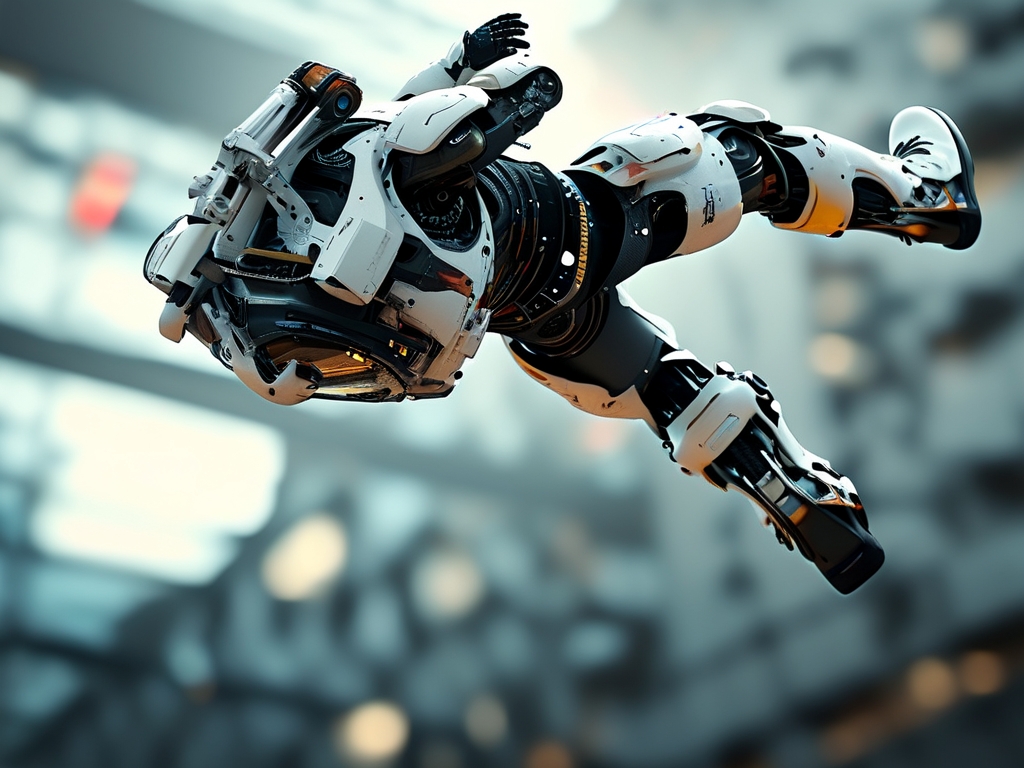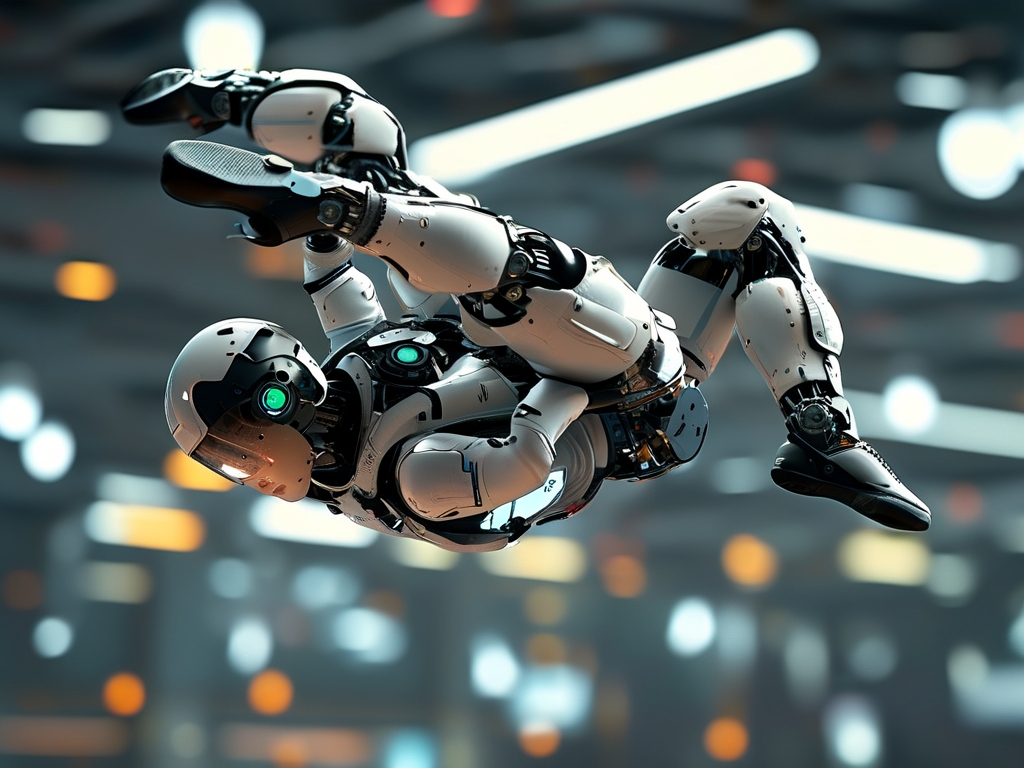The ability of humanoid robots to perform acrobatic maneuvers like backflips represents a quantum leap in robotics engineering. This article explores the intricate systems enabling these gravity-defying feats, focusing on three core aspects: dynamic stabilization, actuator precision, and algorithmic coordination.
Modern robotic backflip implementations rely on advanced inertial measurement units (IMUs) that process data at 1,000 Hz frequencies. These sensors feed real-time orientation data to central processing units through custom protocols like:
IMU_DataStream {
float32 angular_velocity[3];
float32 linear_acceleration[3];
uint16 timestamp;
} Such high-speed data transmission allows for mid-air adjustments within 3 milliseconds of detected positional variance, a critical requirement given the average 0.8-second duration of a robotic backflip.
Hydraulic actuator systems have emerged as the preferred power delivery method, capable of generating 220 N·m of torque within 0.05 seconds. The latest generation of electrohydrostatic actuators (EHAs) employed in robots like the HD-ITX model demonstrate 92% energy conversion efficiency, a 15% improvement over previous iterations. This enhanced performance comes from proprietary valve designs that regulate fluid dynamics with 0.01mm precision.
Machine learning plays a pivotal role in motion planning. Reinforcement learning algorithms undergo virtual training cycles equivalent to 14 human years of practice in simulated environments. The POLARIS framework developed by MIT researchers utilizes hybrid control strategies combining:
- Model predictive control for trajectory planning
- Neural networks for environmental adaptation
- Fuzzy logic systems for impact absorption
Field tests reveal that contemporary bipedal robots can achieve 97% flip success rates on standardized surfaces, though performance degrades to 68% on uneven terrain. This challenge has spurred development of multimodal stabilization systems that integrate visual odometry with ground penetration radar.
Energy management remains a critical constraint. A single backflip consumes approximately 480W of power - equivalent to operating three household refrigerators simultaneously. Emerging solutions include capacitive discharge systems that temporarily boost power output by 300% without overheating components.

The implications extend beyond technical demonstrations. Search-and-rescue prototypes now incorporate controlled aerial maneuvers to navigate collapsed structures. In industrial settings, robots with fall recovery capabilities reduce equipment damage rates by 42% according to 2023 manufacturing reports.
Looking ahead, researchers are experimenting with biomimetic designs inspired by gymnasts' biomechanics. The "TendonSync" project replicates human elastic energy storage mechanisms through synthetic polymer bundles, demonstrating 22% power savings during takeoff phases. As these technologies mature, we anticipate seeing robots executing complex gymnastic routines with human-like fluidity by 2028.

This technological evolution raises important questions about safety certification standards. Current ASTM guidelines for robotic motion systems are being revised to address high-velocity maneuvers, with new compliance testing expected to mandate redundant stabilization systems and emergency torque limiters.
From laboratory curiosity to practical implementation, robotic backflip technology exemplifies the remarkable progress in mechatronic systems. As these machines master increasingly complex dynamic movements, they redefine the boundaries of what's possible in automation and human-robot interaction.









